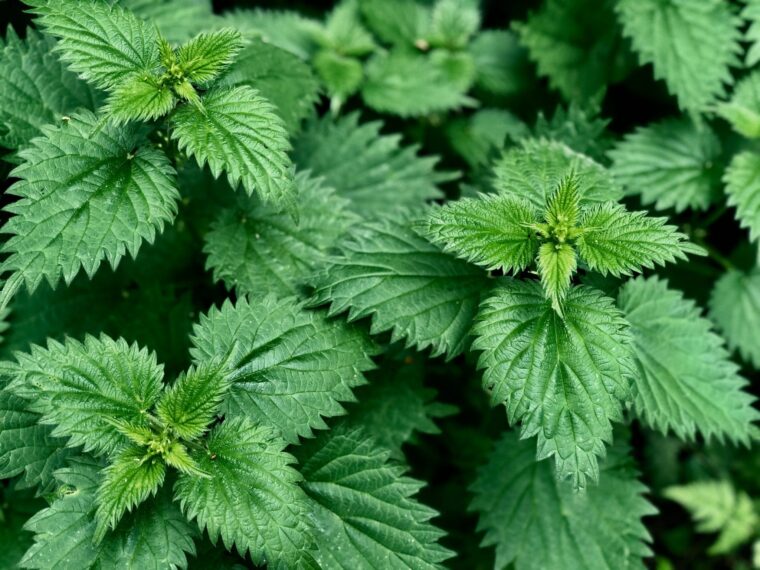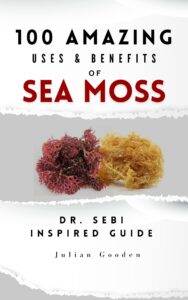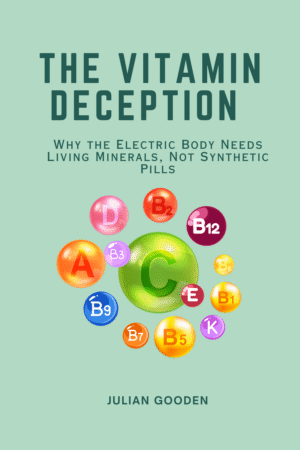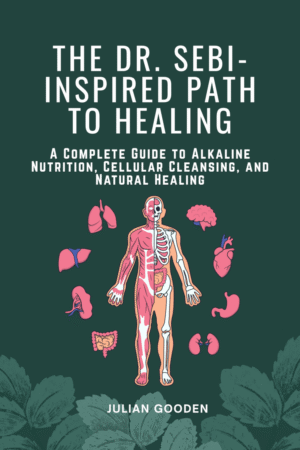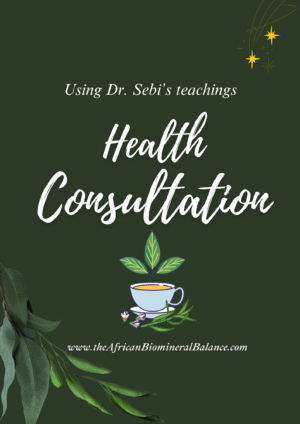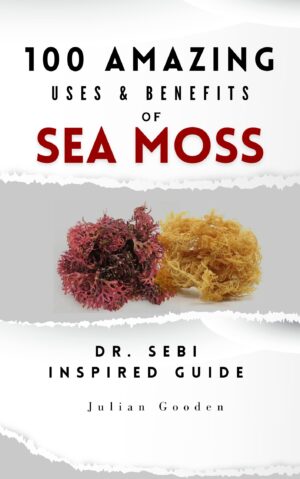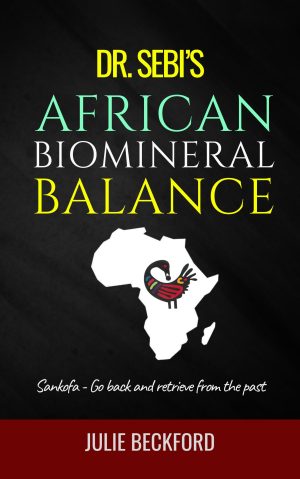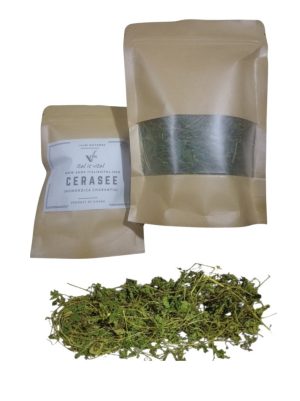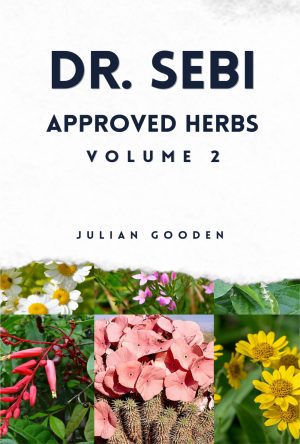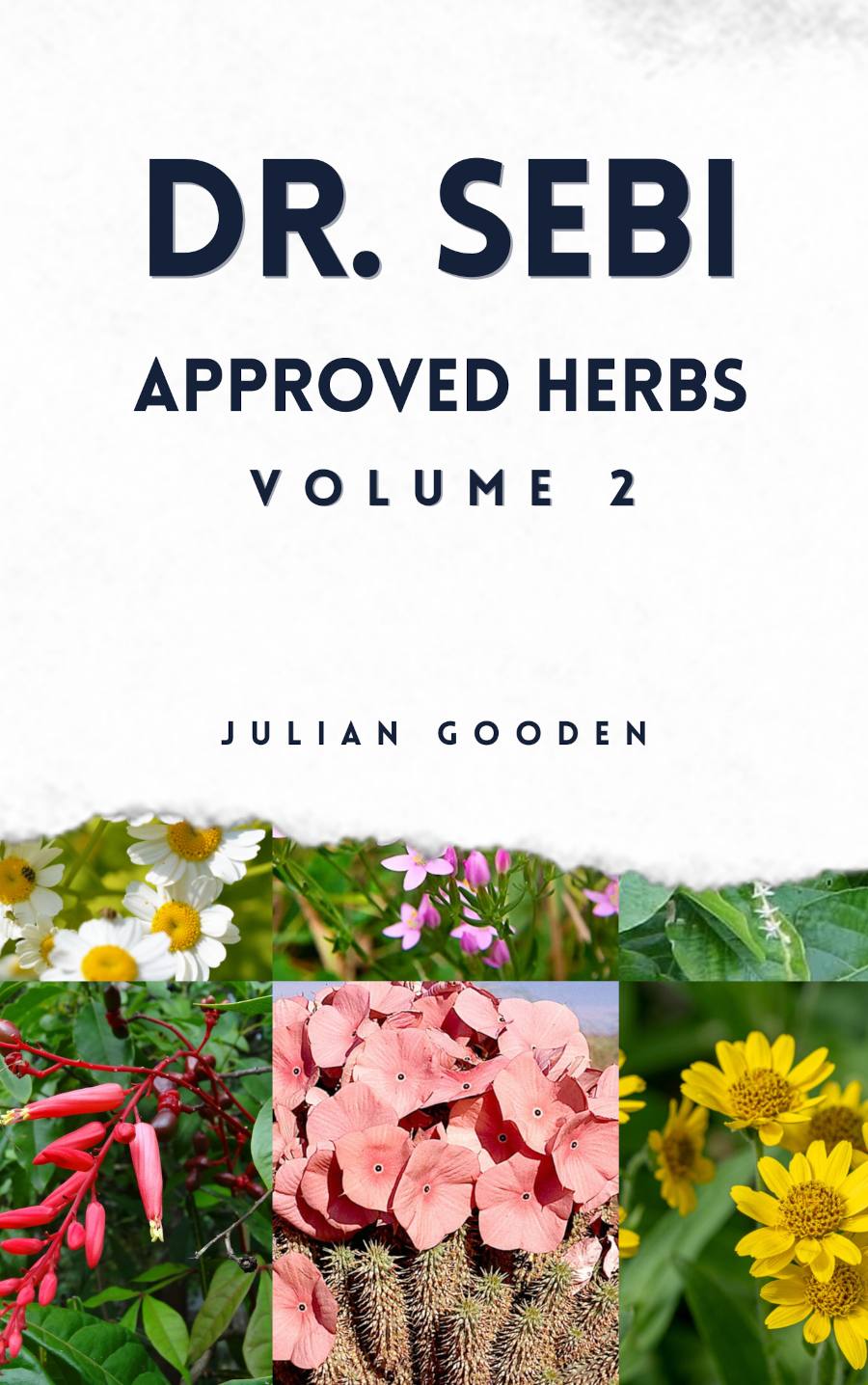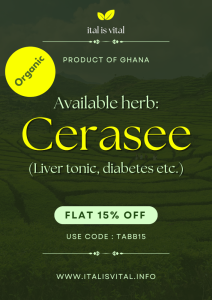Dr. Sebi, born Alfredo Darrington Bowman, was a world-renowned herbalist, healer, and advocate for natural health who developed the African Bio-mineral Balance. This natural approach emphasizes the use of alkaline, plant foods and herbal remedies to cleanse, nourish, and restore balance to the body at a cellular level. Dr. Sebi taught that disease stems from mucus accumulation and mineral deficiencies caused by acidic diets. His protocols, rooted in traditional African and Caribbean herbalism, focus on using natural herbs to detoxify the body, replenish essential minerals, and promote optimal health.
Herbs are the cornerstone of Dr. Sebi’s healing methodology. Each herb in his repertoire was chosen for its rich mineral content, detoxifying properties, and ability to support the body’s natural healing processes. These herbs align with his alkaline philosophy, avoiding hybrid or genetically modified plants and prioritizing those that grow naturally in harmony with the environment.
In this expanded guide, we explore 25 of the most popular herbs recommended by Dr. Sebi, diving into their traditional uses, modern applications, potential preparation methods, benefits, and precautions. Whether you’re new to Dr. Sebi’s teachings or a seasoned follower, this guide provides a detailed look at how these herbs can support a natural, alkaline lifestyle.
1. Sea Moss (Irish Moss)
Scientific Name: Chondrus crispus
Overview: Sea moss, a nutrient-dense seaweed, is one of Dr. Sebi’s most celebrated food. It contains 92 of the 102 minerals the body requires, including iodine, calcium, potassium, magnesium, and zinc.
Benefits: Boosts immunity, supports thyroid function, enhances skin health, aids digestion, and promotes joint and bone health. Its mucilaginous nature soothes the digestive tract and supports gut health.
Uses: Commonly used to make gels, smoothies, or teas. It’s often combined with bladderwrack for a synergistic mineral boost.
Preparation: Soak dried sea moss for 4-6 hours, rinse thoroughly, blend with water to create a gel, and add to recipes.
Precautions: Avoid overconsumption due to high iodine content, which may affect thyroid function. Consult a healthcare provider if you have thyroid conditions.
Why It’s Popular: Its versatility and mineral density make it a staple for alkaline diets, supporting overall vitality and cellular health.
2. Bladderwrack
Scientific Name: Fucus vesiculosus
Overview: This brown seaweed is rich in iodine, fucoidan, and trace minerals, making it a perfect complement to sea moss in Dr. Sebi’s protocols.
Benefits: Supports thyroid health, boosts metabolism, promotes weight management, and enhances energy levels. It also supports skin health due to its anti-inflammatory properties.
Uses: Often combined with sea moss in gels, capsules, or teas.
Preparation: Soak and blend with sea moss for a gel, or steep as a tea.
Precautions: High iodine content requires moderation, especially for those with hyperthyroidism or iodine sensitivity.
Why It’s Popular: Its synergy with sea moss provides a comprehensive mineral profile, addressing deficiencies common in modern diets.
3. Burdock Root
Scientific Name: Arctium lappa
Overview: Burdock root is a potent blood purifier rich in iron, antioxidants, and inulin, a prebiotic fiber. It’s a staple in Dr. Sebi’s detox protocols.
Benefits: Supports liver detoxification, clears skin conditions like acne and eczema, improves circulation, and boosts energy.
Uses: Used in teas, tinctures, or as a decoction. Can also be added to soups or stews.
Preparation: Boil 1-2 teaspoons of dried root in water for 15-20 minutes to make a tea or decoction.
Precautions: May cause mild allergic reactions in some individuals. Avoid if pregnant or breastfeeding without medical advice.
Why It’s Popular: Its ability to purify the blood and support skin health aligns with Dr. Sebi’s focus on cleansing and rejuvenation.
4. Yellow Dock Root
Scientific Name: Rumex crispus
Overview: Yellow dock is a mineral-rich herb known for its iron content and detoxifying properties.
Benefits: Enhances iron absorption, supports liver and kidney function, promotes healthy digestion, and acts as a gentle laxative.
Uses: Taken as a tea, tincture, or capsule for detoxification and blood cleansing.
Preparation: Steep 1 teaspoon of dried root in hot water for 10-15 minutes for tea.
Precautions: Avoid excessive use due to its laxative effect, which may cause digestive discomfort.
Why It’s Popular: Its role in improving iron levels and supporting detoxification makes it essential for Dr. Sebi’s cleansing protocols.
5. Sarsaparilla Root
Scientific Name: Smilax ornata
Overview: Sarsaparilla is one of the richest plant-based sources of iron and is prized for its anti-inflammatory and detoxifying properties.
Benefits: Boosts energy, balances hormones, supports joint health, and cleanses the blood. It’s also used for skin conditions like psoriasis.
Uses: Commonly prepared as a tea or tincture.
Preparation: Simmer 1-2 teaspoons of dried root in water for 20 minutes to make a decoction.
Precautions: May interact with medications; consult a healthcare provider if on prescription drugs.
Why It’s Popular: Its high iron content and hormone-balancing effects make it a favorite for vitality and reproductive health.
6. Jamaican Blue Vervain
Scientific Name: Verbena officinalis or Stachytarpheta jamaicensis
Overview: This nervine herb is valued for its calming effects on the nervous system and its support for women’s health.
Benefits: Reduces stress, eases headaches, promotes restful sleep, relieves muscle tension, and supports menstrual health.
Uses: Taken as a tea or tincture for relaxation and hormonal balance.
Preparation: Steep 1 teaspoon of dried herb in hot water for 10 minutes.
Precautions: Avoid during pregnancy, as it may stimulate uterine contractions.
Why It’s Popular: Its ability to calm the mind and body makes it ideal for stress-related conditions and sleep issues.
7. Chaparral
Scientific Name: Larrea tridentata
Overview: Chaparral is a powerful antioxidant and blood purifier used in traditional Native American and African herbalism.
Benefits: Cleanses the lymphatic system, fights free radicals, supports healthy skin, and may have antimicrobial properties.
Uses: Used in teas, capsules, or topical salves for skin conditions.
Preparation: Steep 1 teaspoon of dried herb in hot water for 5-10 minutes (use sparingly due to potency).
Precautions: Can be toxic in large doses; use under expert guidance. Avoid if you have liver or kidney issues.
Why It’s Popular: Its potent detoxifying effects align with Dr. Sebi’s emphasis on lymphatic and cellular cleansing.
8. Dandelion Root/Leaf
Scientific Name: Taraxacum officinale
Overview: Dandelion is a mineral-rich herb that supports liver and kidney function while acting as a natural diuretic.
Benefits: Enhances digestion, detoxifies the liver, balances hormones, and supports kidney health.
Uses: Consumed as a tea, tincture, or added to salads (leaves).
Preparation: Boil 1-2 teaspoons of root or steep leaves in hot water for 10 minutes.
Precautions: Safe for most, but avoid if allergic to ragweed or related plants.
Why It’s Popular: Its accessibility and broad detox benefits make it a versatile herb in Dr. Sebi’s protocols.
9. Elderberry
Scientific Name: Sambucus nigra
Overview: Elderberry is a potent immune booster packed with antioxidants and antimicrobial compounds.
Benefits: Supports immune health, fights colds and flu, reduces inflammation, and promotes respiratory health.
Uses: Taken as a syrup, tea, or capsule.
Preparation: Simmer dried berries in water for 20 minutes to make a syrup or tea.
Precautions: Raw berries are toxic; always cook before consuming.
Why It’s Popular: Its immune-boosting properties make it a go-to for seasonal wellness.
10. Guaco
Scientific Name: Mikania glomerata
Overview: Guaco is a traditional herb used in South American and Caribbean herbalism for respiratory health.
Benefits: Clears airways, reduces congestion, soothes coughs, and supports asthma management.
Uses: Taken as a tea or tincture.
Preparation: Steep 1 teaspoon of dried leaves in hot water for 10 minutes.
Precautions: Limited data on long-term use; consult an herbalist for extended use.
Why It’s Popular: Its respiratory benefits make it essential for lung health in Dr. Sebi’s protocols.
11. Lupulo (Hops)
Scientific Name: Humulus lupulus
Overview: Hops, known for its use in brewing, is a calming herb in Dr. Sebi’s repertoire.
Benefits: Reduces anxiety, promotes restful sleep, and soothes nervous tension.
Uses: Taken as a tea or tincture for relaxation.
Preparation: Steep 1 teaspoon of dried hops in hot water for 10 minutes.
Precautions: May cause drowsiness; avoid operating machinery after use.
Why It’s Popular: Its sedative properties support mental health and sleep quality.
12. Valerian Root
Scientific Name: Valeriana officinalis
Overview: Valerian is a powerful natural sedative used for centuries to promote relaxation.
Benefits: Enhances sleep quality, reduces anxiety, and eases nervous restlessness.
Uses: Taken as a tea, capsule, or tincture.
Preparation: Steep 1 teaspoon of dried root in hot water for 10-15 minutes.
Precautions: May cause drowsiness or mild headaches in some individuals. Avoid combining with sedatives.
Why It’s Popular: Its strong calming effects make it ideal for insomnia and stress relief.
13. Cascara Sagrada
Scientific Name: Rhamnus purshiana
Overview: This gentle herbal laxative is a key detox herb in Dr. Sebi’s protocols.
Benefits: Supports regular bowel movements, cleanses the colon, and aids detoxification.
Uses: Taken as a tea, capsule, or tincture.
Preparation: Steep 1 teaspoon of dried bark in hot water for 10 minutes.
Precautions: Avoid long-term use to prevent dependency or electrolyte imbalance.
Why It’s Popular: Its effectiveness in promoting healthy digestion aligns with Dr. Sebi’s focus on detoxification.
14. Quassia
Scientific Name: Quassia amara
Overview: Quassia is a bitter herb known for its antiparasitic and digestive properties.
Benefits: Eliminates parasites, cleanses the liver, and improves digestion.
Uses: Taken as a tea or tincture in small doses.
Preparation: Steep ½ teaspoon of dried wood chips in hot water for 10 minutes.
Precautions: Bitter taste may cause nausea; use sparingly and under guidance.
Why It’s Popular: Its antiparasitic action supports Dr. Sebi’s emphasis on cleansing the body of toxins.
15. Contribo (Aristolochia)
Scientific Name: Aristolochia trilobata
Overview: Contribo is a potent detox herb used in traditional Caribbean medicine.
Benefits: Supports deep cleansing, aids digestion, and promotes detoxification.
Uses: Taken as a tea or tincture in very small amounts.
Preparation: Steep ¼ teaspoon of dried herb in hot water for 5-10 minutes.
Precautions: Highly potent; may be toxic in large doses. Use only under expert supervision.
Why It’s Popular: Its strong detoxifying effects make it a specialized herb in Dr. Sebi’s protocols.
16. Anamu (Guinea Hen Weed)
Scientific Name: Petiveria alliacea
Overview: Anamu is a powerful immune-supporting herb with a strong garlic-like odor.
Benefits: Boosts immunity, fights bacteria and fungi, reduces inflammation, and may have cancer-fighting properties.
Uses: Taken as a tea, capsule, or tincture.
Preparation: Steep 1 teaspoon of dried leaves in hot water for 10 minutes.
Precautions: Avoid during pregnancy or if allergic to sulfur compounds.
Why It’s Popular: Its broad antimicrobial and immune-boosting effects make it a versatile herb.
17. Muicle (Mexican Honeysuckle)
Scientific Name: Justicia spicigera
Overview: Muicle is a blood tonic used in traditional Mexican and Caribbean herbalism.
Benefits: Supports circulation, enhances oxygenation, and promotes red blood cell production.
Uses: Taken as a tea or tincture.
Preparation: Steep 1 teaspoon of dried leaves in hot water for 10 minutes.
Precautions: Limited data on long-term use; consult an herbalist.
Why It’s Popular: Its role in improving blood health aligns with Dr. Sebi’s focus on vitality.
18. Kalawalla
Scientific Name: Polypodium leucotomos
Overview: Kalawalla is a fern used for immune and skin health.
Benefits: Balances the immune system, supports autoimmune conditions, and improves skin disorders like psoriasis and eczema.
Uses: Taken as a tea, capsule, or tincture.
Preparation: Steep 1 teaspoon of dried herb in hot water for 10 minutes.
Precautions: Safe for most, but consult a healthcare provider for autoimmune conditions.
Why It’s Popular: Its immune-modulating effects make it unique in Dr. Sebi’s protocols.
19. Hydrangea Root
Scientific Name: Hydrangea arborescens
Overview: Hydrangea root is a traditional remedy for urinary tract health.
Benefits: Supports kidney and bladder function, helps dissolve stones, and promotes detoxification.
Uses: Taken as a tea or tincture.
Preparation: Boil 1 teaspoon of dried root in water for 15 minutes.
Precautions: Avoid excessive use, as it may cause digestive upset.
Why It’s Popular: Its urinary tract support complements Dr. Sebi’s detox focus.
20. Mullein Leaf
Scientific Name: Verbascum thapsus
Overview: Mullein is a soothing herb for respiratory health.
Benefits: Clears mucus, soothes the respiratory tract, and improves breathing.
Uses: Taken as a tea or inhaled as steam for lung support.
Preparation: Steep 1-2 teaspoons of dried leaves in hot water for 10 minutes.
Precautions: Strain tea through a fine mesh to remove fine hairs that may irritate the throat.
Why It’s Popular: Its effectiveness for respiratory issues makes it a staple for lung health.
21. Ortiga (Stinging Nettle)
Scientific Name: Urtica dioica
Overview: Stinging nettle is a mineral-rich herb used for overall vitality.
Benefits: Supports kidney function, promotes hair growth, reduces joint pain, and boosts energy.
Uses: Taken as a tea, capsule, or added to soups.
Preparation: Steep 1-2 teaspoons of dried leaves in hot water for 10 minutes.
Precautions: Avoid touching raw leaves due to stinging hairs; safe when cooked or dried.
Why It’s Popular: Its nutrient density supports multiple systems in the body.
22. Damiana
Scientific Name: Turnera diffusa
Overview: Damiana is a mood-enhancing herb with aphrodisiac properties.
Benefits: Balances hormones, boosts energy, enhances mood, and supports reproductive health.
Uses: Taken as a tea, tincture, or smoked in small amounts.
Preparation: Steep 1 teaspoon of dried leaves in hot water for 10 minutes.
Precautions: Avoid during pregnancy or if on diabetes medications, as it may lower blood sugar.
Why It’s Popular: Its uplifting and libido-enhancing effects make it a favorite for vitality.
23. Blessed Thistle
Scientific Name: Cnicus benedictus
Overview: Blessed thistle is a digestive and hormonal tonic.
Benefits: Supports digestion, cleanses the liver, and balances hormones, especially for women.
Uses: Taken as a tea or tincture.
Preparation: Steep 1 teaspoon of dried herb in hot water for 10 minutes.
Precautions: Avoid during pregnancy, as it may stimulate uterine contractions.
Why It’s Popular: Its support for women’s health and digestion aligns with Dr. Sebi’s protocols.
24. Lily of the Valley
Scientific Name: Convallaria majalis
Overview: This potent herb is used sparingly in Dr. Sebi’s heart formulas.
Benefits: Supports circulation and cardiovascular function.
Uses: Taken in very small amounts as a tincture or tea under expert guidance.
Preparation: Use only under professional supervision due to potency.
Precautions: Highly toxic in large doses; can cause heart complications. Not for self-administration.
Why It’s Popular: Its targeted use in heart health makes it a specialized herb in Dr. Sebi’s repertoire.
25. Red Clover
Scientific Name: Trifolium pratense
Overview: Red clover is a gentle blood purifier and lymphatic cleanser.
Benefits: Supports skin health, balances hormones, and aids detoxification.
Uses: Taken as a tea, tincture, or capsule.
Preparation: Steep 1-2 teaspoons of dried flowers in hot water for 10 minutes.
Precautions: Avoid if on blood thinners or during pregnancy due to phytoestrogen content.
Why It’s Popular: Its gentle detox and hormonal benefits make it widely used in holistic healing.
Final Thoughts
Dr. Sebi’s African Bio-mineral Balance is more than a collection of herbs; it’s a philosophy that emphasizes harmony with nature, cellular cleansing, and mineral replenishment. These 25 herbs represent the foundation of his approach, each selected for its ability to nourish, detoxify, and restore balance. From sea moss’s mineral density to chaparral’s lymphatic cleansing, these botanicals address a wide range of health concerns, from immunity and digestion to hormonal balance and respiratory health.
How to Incorporate These Herbs:
- Start Slowly: Begin with one or two herbs to assess your body’s response.
- Follow Alkaline Principles: Pair herbs with Dr. Sebi’s approved alkaline foods (e.g., quinoa, amaranth, and leafy greens) for optimal results.
- Consult an Expert: Work with a qualified herbalist or practitioner familiar with Dr. Sebi’s protocols, especially for potent herbs like contribo or lily of the valley.
- Source Quality Herbs: Choose organic, non-GMO herbs from reputable suppliers to ensure purity and efficacy.
Precautions: While these herbs are natural, they are powerful. Always research potential interactions with medications or existing health conditions. Pregnant or breastfeeding individuals, those with chronic illnesses, or those on medications should consult an experienced herbalist before use.
By integrating these herbs into your lifestyle mindfully, you can tap into the wisdom of Dr. Sebi’s teachings, supporting your body’s innate ability to heal, regenerate, and thrive in alignment with nature’s alkaline blueprint.
